Grammarly is a writing assistant. In keeping with our knowledge, its web site will get an estimated 22.2M month-to-month search visits throughout 2,468 revealed pages.
If Grammarly purchased this identical site visitors by way of Google Adverts, it will value an estimated $5.1M per month.
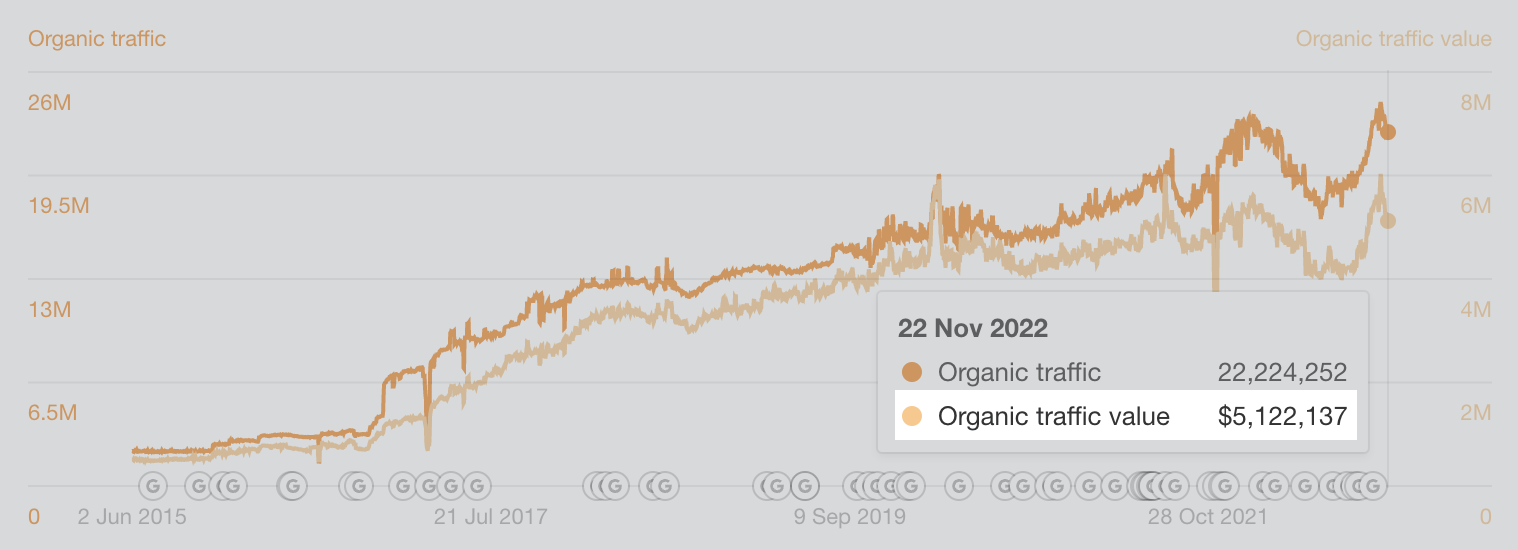
On this publish, I’ll share 11 takeaways from my deep dive into the corporate’s search engine optimization technique.
Grammarly will get an estimated 7.8M month-to-month search visits from search queries containing the phrase “grammarly.” That’s 38.6% of its whole natural site visitors.

Paradoxically, nonetheless, it will get a minimum of an extra 590K month-to-month searches for key phrases containing model misspellings.
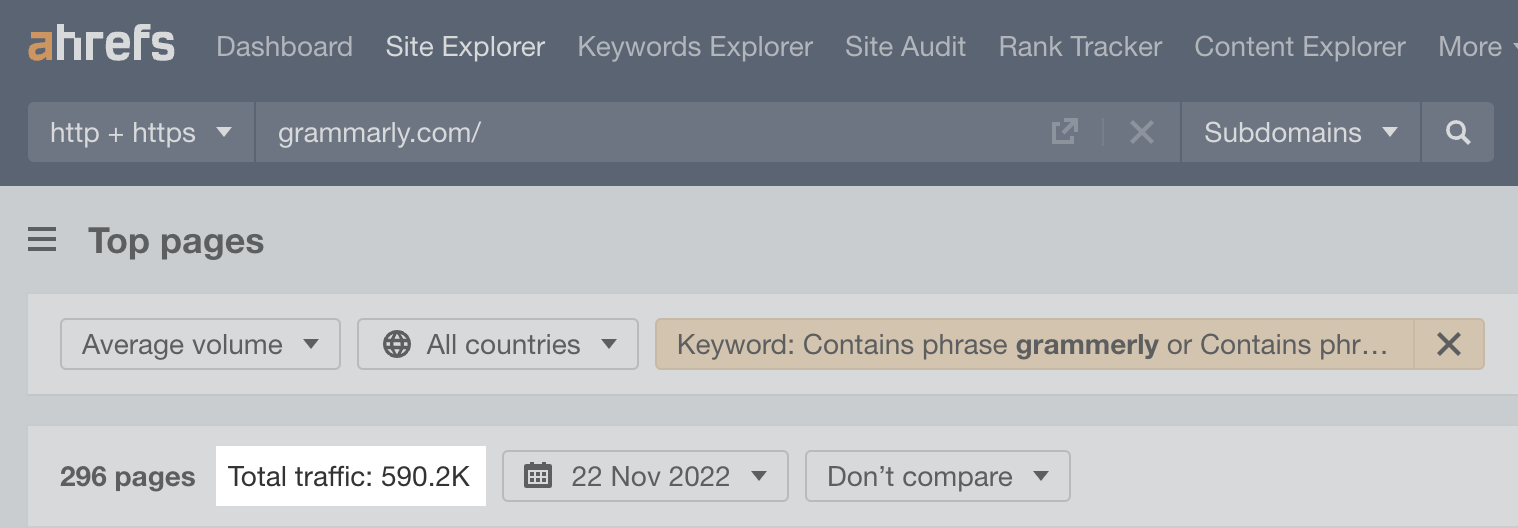
On condition that it has 30M day by day customers (by its personal estimates), that is hardly stunning. Actually, there are over 37K queries in our U.S. key phrase database containing “grammarly” with a complete estimated month-to-month search quantity of three.1M.
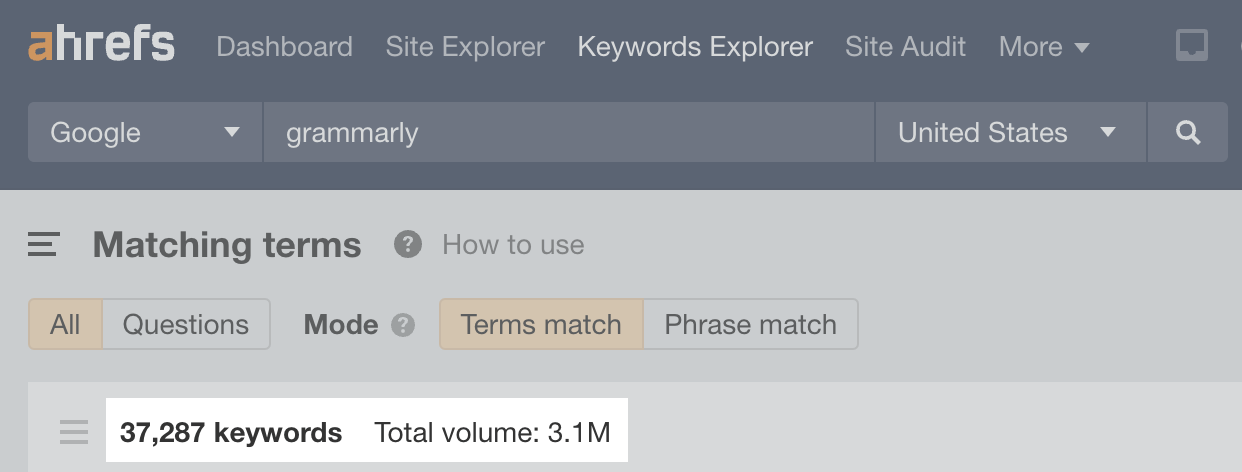
Grammarly’s homepage will get an estimated 6.6M month-to-month search visits—virtually a 3rd of its whole site visitors.

Regardless of the corporate seemingly making some effort to focus on the key phrase “writing assistant” on its homepage (it’s within the web page’s title tag), virtually all of its site visitors is branded.

Actually, its homepage is accountable for 84.6% of all its branded site visitors.
Simply 277 of Grammarly’s 2,468 pages entice the majority of its natural search site visitors—20.1M month-to-month visits.
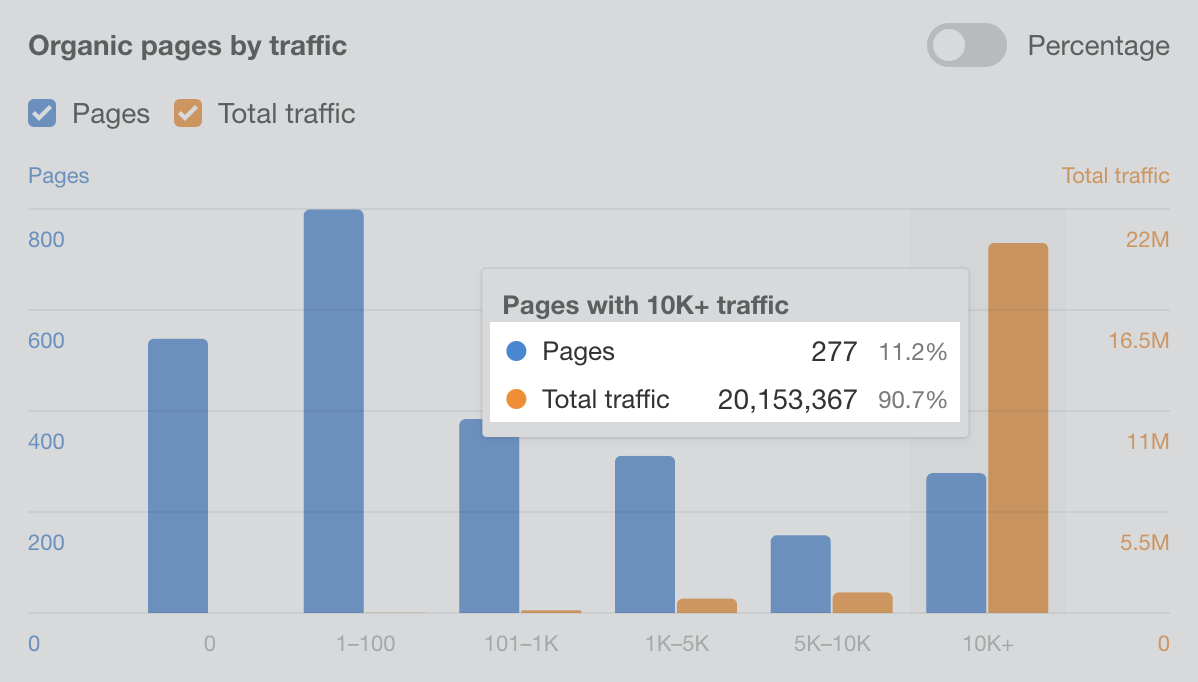
This site visitors goes to a mixture of free instruments, weblog posts, and its homepage.
Grammarly is much from the odd one out right here. You’ll see the same distribution for many web sites, due to the Pareto precept (80/20 rule).
543 of Grammarly’s 2,468 pages get no natural site visitors.
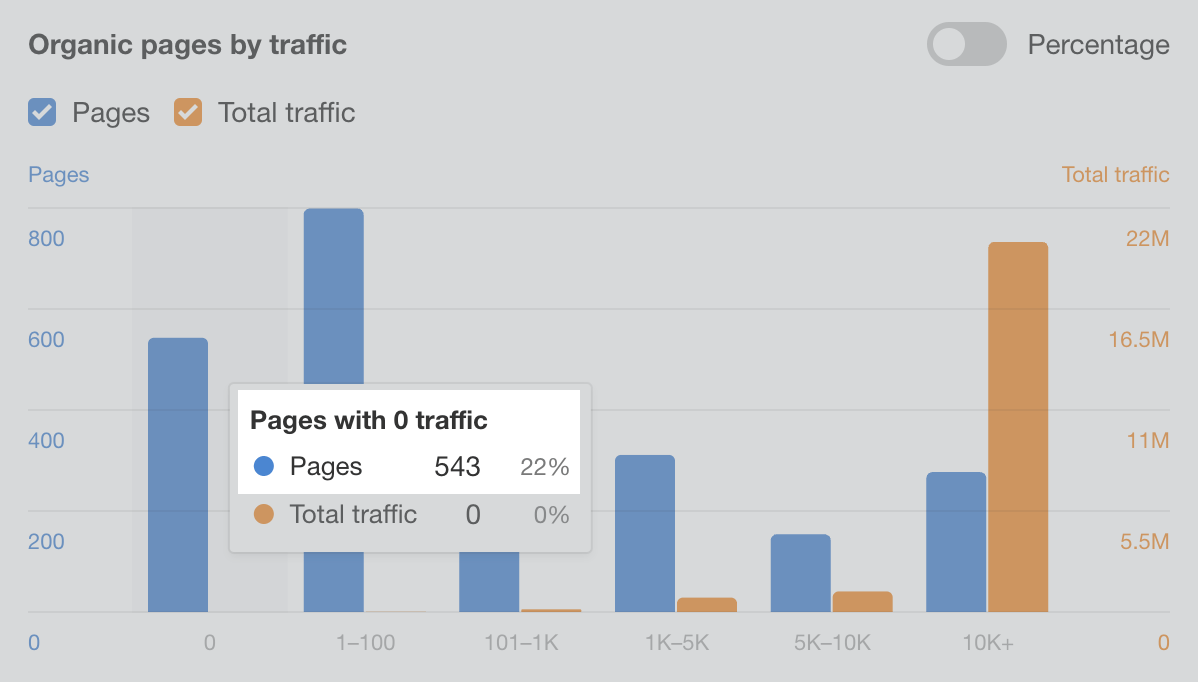
Right here’s a fast breakdown of those pages:
- 360 weblog posts
- 76 jobs pages
- 77 help articles
- 12 developer/API pages
- 12 PDFs
- 6 different
Weblog posts apart, not one of the different pages seem to have been created with attracting search site visitors in thoughts. So it’s hardly stunning that they get none.
Actually, that is the case for a few of the weblog posts too.
For instance, there are 48 posts with no site visitors underneath the /enterprise/ subfolder.
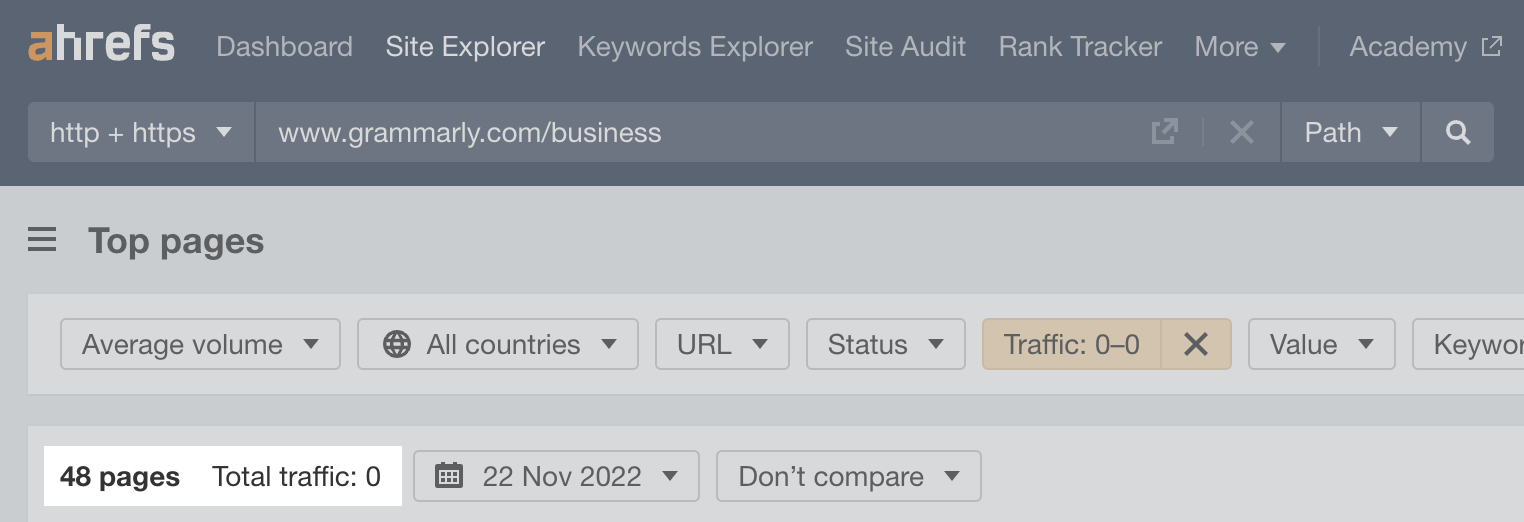
Most of those appear to be extra thought management–sort content material than search-focused items.

Grammarly has seven free instruments that cumulatively recover from 3M estimated month-to-month search visits.
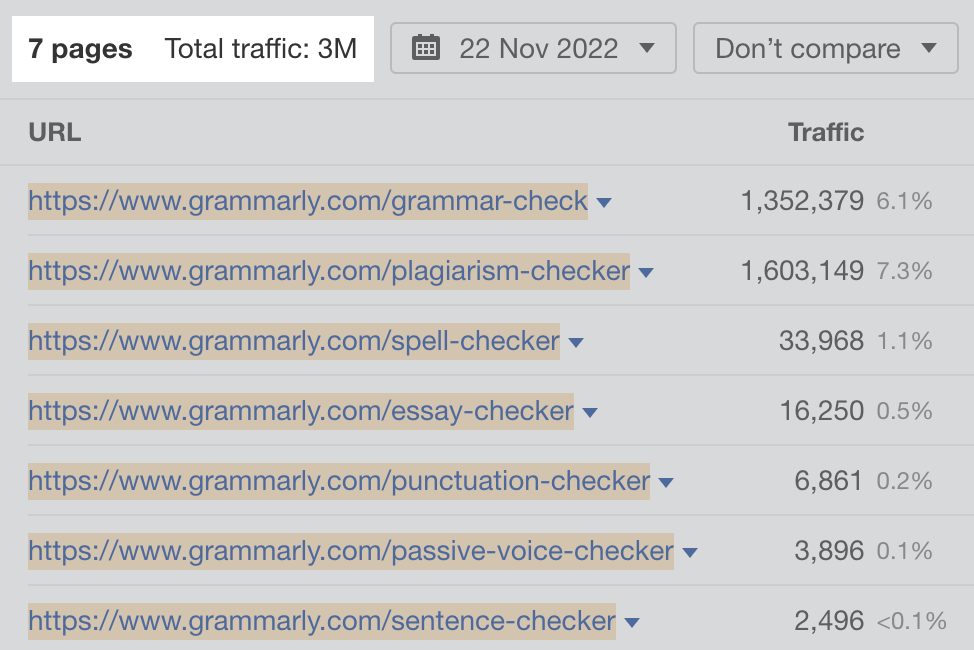
Nevertheless, virtually all site visitors goes to only two of those instruments: its grammar checker and plagiarism checker.
Apparently, 77.4% of this site visitors is non-branded. It comes from key phrases like “grammar checker,” “plagiarism checker,” “spell checker,” and “punctuation checker”—all of which get tens of 1000’s of estimated month-to-month searches.
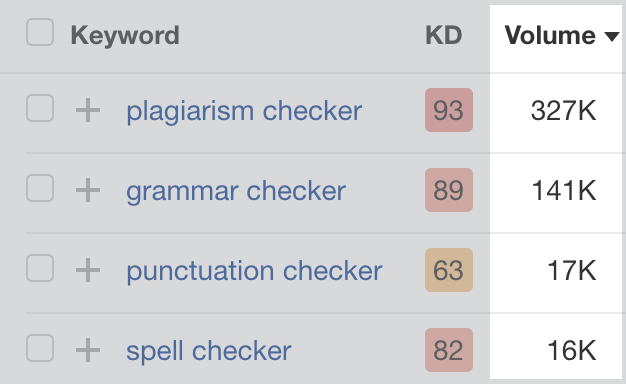
Do you wish to use this search engine optimization tactic in your web site?
- Go to Key phrases Explorer
- Enter a couple of “seed” phrases associated to your trade
- Go to the Matching phrases report
- Add phrases and phrases like instrument, instruments, calculator, checker, and generator to the “Embrace” filter
- Choose “Any phrase” on the “Embrace” filter
- Click on “Apply”
For instance, in case you promote accounting software program, you may enter seeds like “tax” and “wage.”
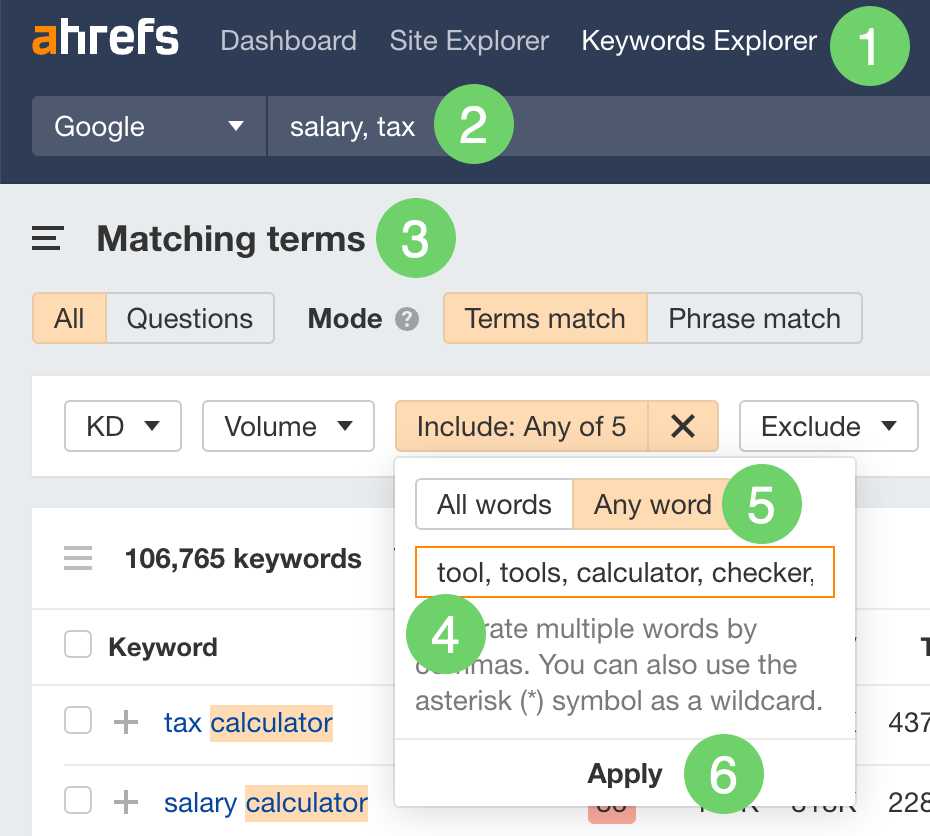
Grammarly is dedicated to running a blog. 1,699 of its 2,468 (69%) pages are weblog posts, which are a magnet for greater than half (~11.2M) of its estimated search site visitors.
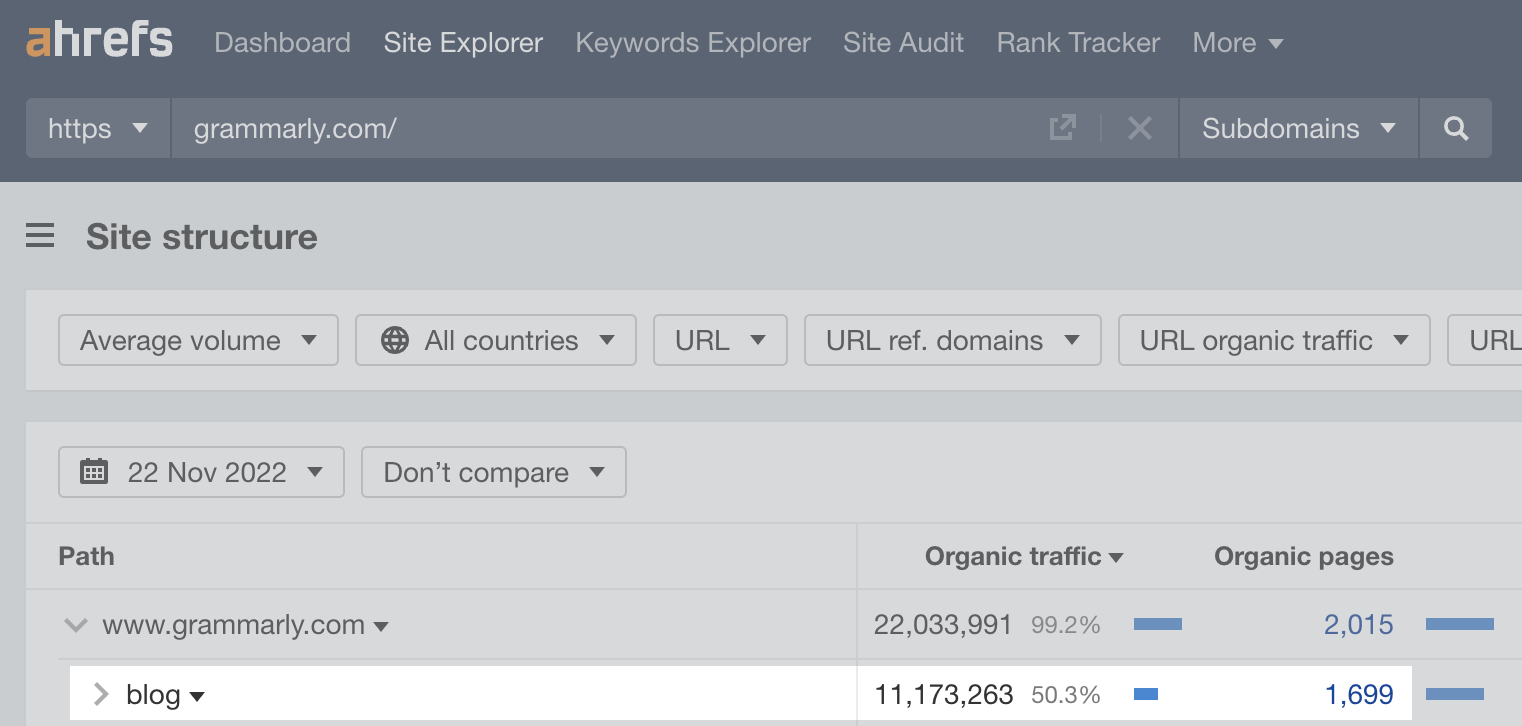
Most of those pages (81.6%) get a minimum of some search site visitors, so it’s clear that Grammarly takes a search-focused strategy to running a blog.
By way of what the posts cowl, they’re primarily about grammatical phrases like verbs, nouns, and so on.

Most of those phrases get tons of month-to-month searches, and Grammarly ranks #1 for a lot of of them—therefore why its weblog will get a lot search site visitors.
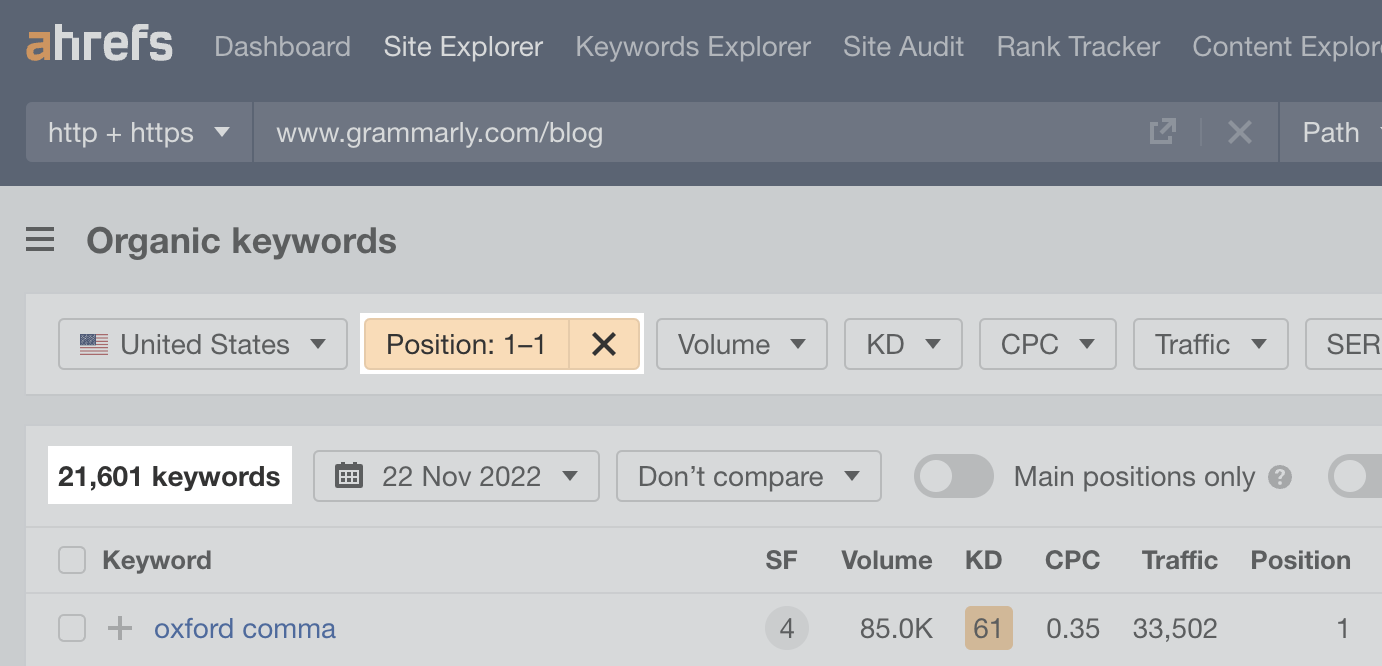
Simply 256 of Grammarly’s 1,699 weblog posts get ~9.4M month-to-month natural search visits—virtually all of its weblog’s whole site visitors.
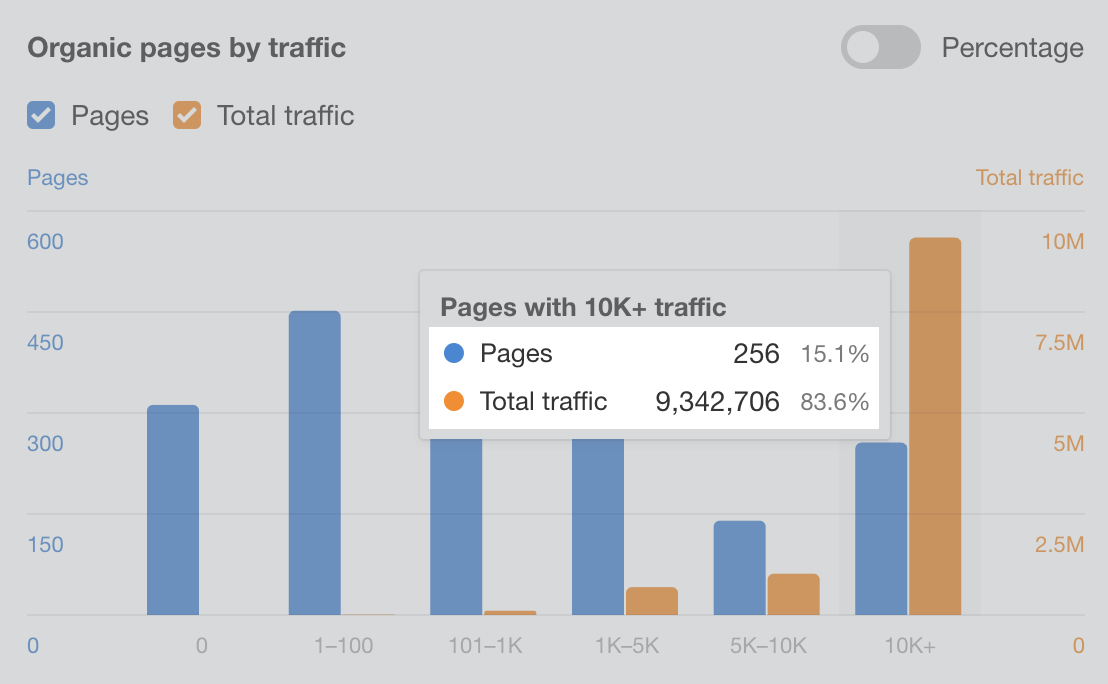
As soon as once more, this distribution isn’t irregular. It’s truly much more excessive on our weblog, with 6.7% of our posts attracting 77.9% of our weblog site visitors.
Nevertheless, we get nowhere close to the quantity of natural search site visitors Grammarly will get.
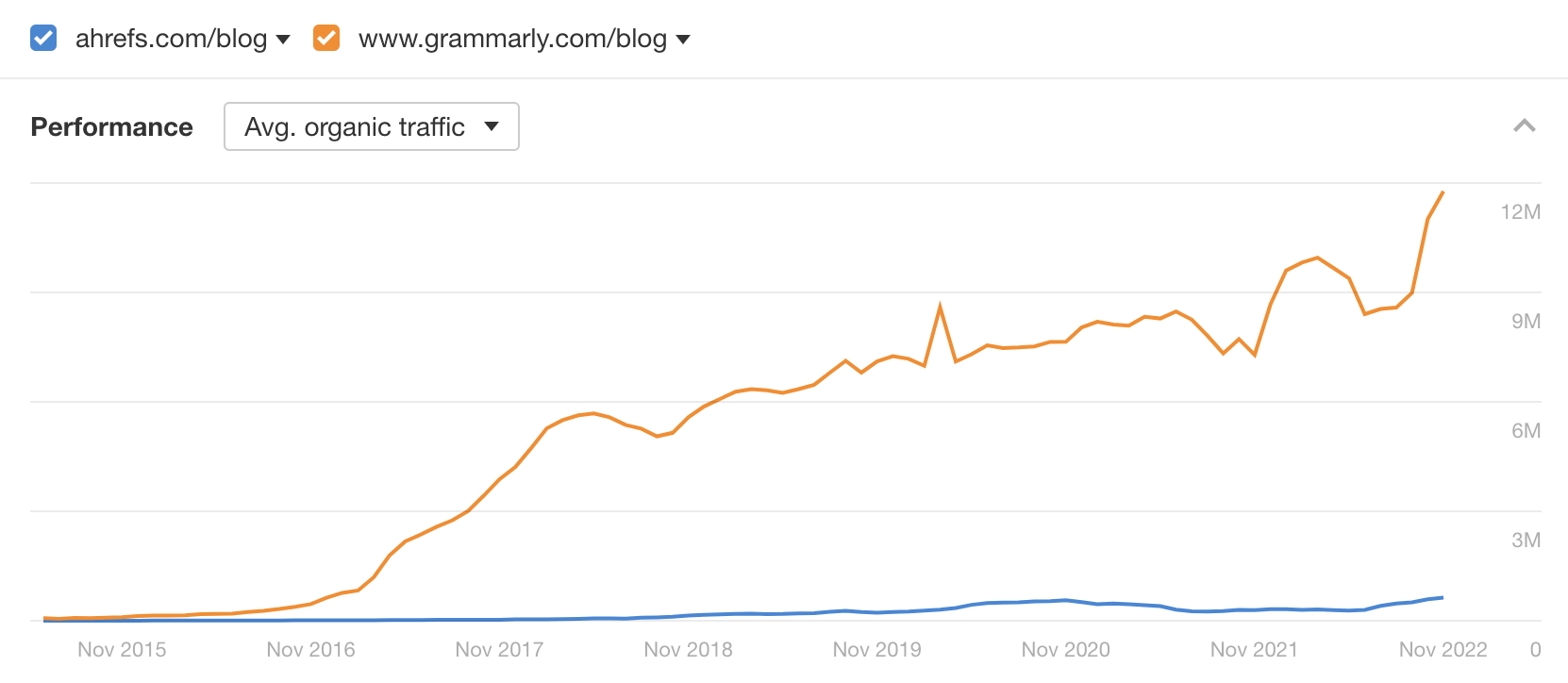
That is partly as a result of the phrases Grammarly targets (and ranks for) are tremendous widespread.
For instance, there are an estimated 151K month-to-month searches for “em sprint” within the U.S. Grammarly at present ranks #6.

Grammarly has been running a blog for some time. It revealed its first weblog publish on June 22, 2012.

If we plug that publish’s URL into Ahrefs’ Content material Explorer, we see that it in all probability didn’t take a lot effort to put in writing, because it’s solely 304 phrases lengthy. But it nonetheless attracts lots of of month-to-month natural visits to this day.

Nevertheless, that is removed from considered one of Grammarly’s top-performing posts.
If we have a look at posts getting 10K month-to-month search visits or extra, solely 24.2% of them had been revealed within the final two years (since November 2020). Most of them had been revealed in 2016 or 2017.
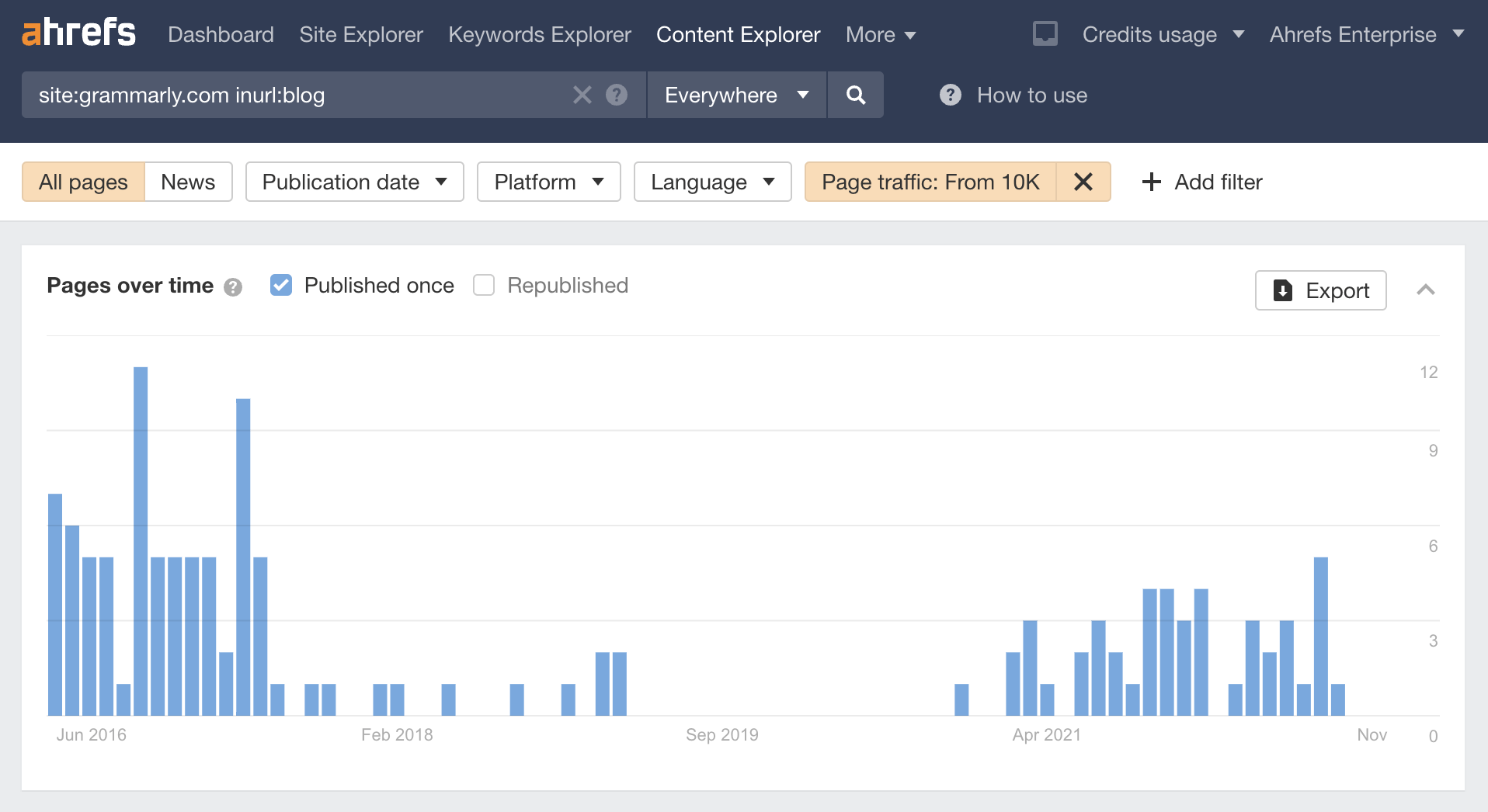
This simply goes to indicate that search engine optimization is just not an in a single day technique. It might probably take years to expertise the total good thing about a strong search engine optimization technique.
Most of Grammarly’s top-performing posts have been up to date in the previous couple of months.
For instance, its publish about contractions in writing was initially revealed in June 2016. However it up to date and republished the publish in August 2022.

If we seek for Grammarly’s weblog in Content material Explorer, the “Pages over time” graph reveals how its publishing and republishing technique has modified over time.
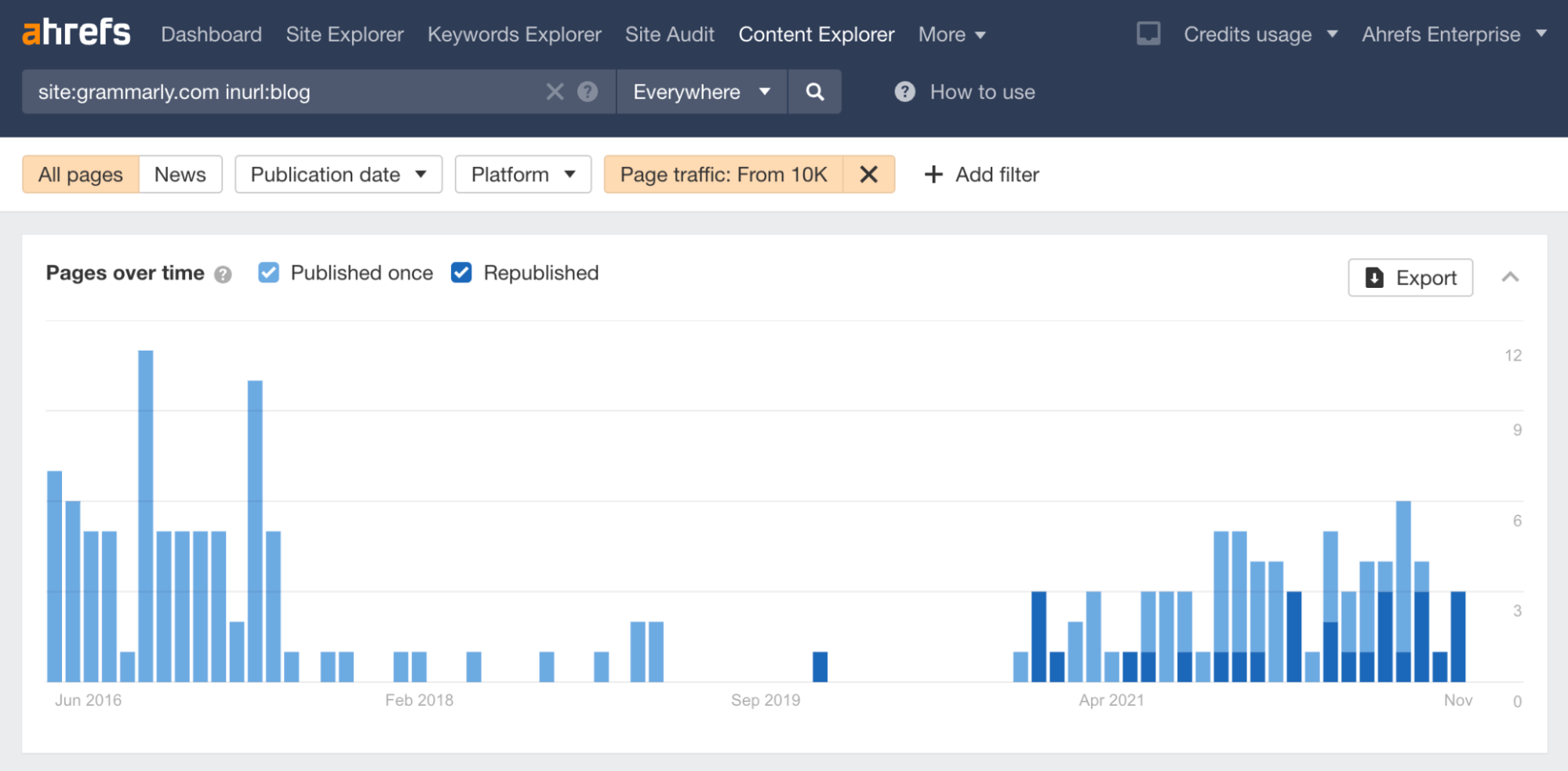
Between June 2016 and June 2017, it revealed 529 new posts however didn’t republish a single publish. Examine that with the interval from June 2021 to June 2022 when it revealed 185 posts and republished 29 (13.5% of all posts throughout the interval).
Many of those updates have had an unimaginable impression on search site visitors too.
For instance, it republished its publish about participles in July 2022. Shortly after, natural search site visitors shot up from ~1.5K to ~16K per month.

Grammarly’s help subdomain solely will get round 0.7% of the corporate’s whole natural search site visitors. However that is fairly spectacular when you think about how little content material there is.
Proper now, in accordance with the Website construction report in Website Explorer, it has 399 pages.

However the spectacular half is that it took minimal effort to get this site visitors, as a lot of this content material is tremendous brief.
For instance, in accordance with Content material Explorer, the top-performing help web page will get an estimated 26.8K month-to-month visits regardless of being simply 77 phrases lengthy.

Actually, 76.5% of the help part’s natural search site visitors comes from simply 20 articles comprising 4,023 phrases in whole.
Just about all this site visitors comes from branded search (e.g., “add grammarly to phrase”). However that’s to be anticipated, as content material on this subdomain solutions questions concerning the instrument.
Grammarly has lately began creating brief introductory guides to matters that hyperlink to associated weblog posts, in any other case often called content material hubs.
Listed here are the 4 “hub” pages it at present has:
It appears to be working effectively to this point. Most of those pages are already attracting a couple of thousand natural search visits per month.
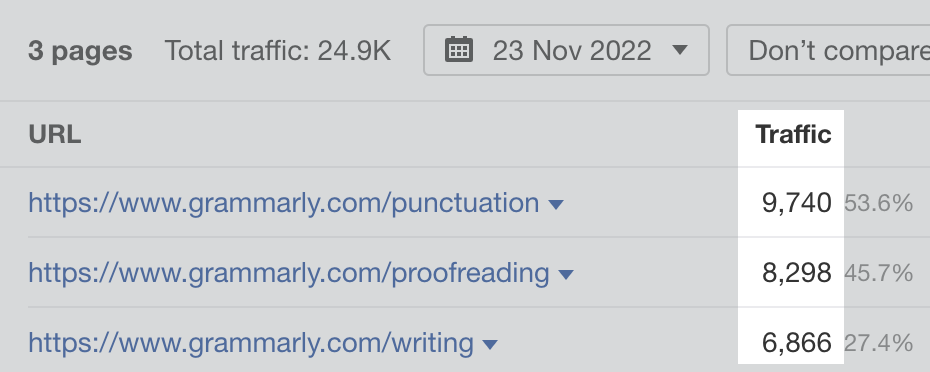
Last ideas
Grammarly’s search efficiency has been on an upward trajectory for years, and there’s loads to be taught from it. It is going to be fascinating to see the place its search engine optimization crew goes from right here.
Bought questions? Ping me on Twitter.